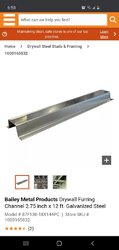I've been in the process of doing some remodeling at my 300 y/o house and have demoed all the walls down to the studs in the room where the wood stove is located.
The hearth where my Jotul was installed is in a corner. The base consists of slate tiles installed with flexbond on top of concrete board which is screwed down to the plywood underlayment.
The corner walls were wood planks nailed into wood studs. Two concrete boards were installed about 1.5" in front of the wood walls with spacers, and then slate tiles mortared onto the concrete board. The concrete boards extended up about 5 feet.
Now that everything is down to studs, I have a question on rebuilding the corner walls of the hearth.
Can I simply attach concrete boards to the wood studs, and then tile over them, or do I need to create another "wall in front of the wall"?
Originally as it was explained to me the "wall in front of the wall" was necessary to allow air to flow between the concrete board and the wood wall because the wood wall was flammable. Since the "new" wall will be non-flammable, I'm curious if all the extra work is necessary to create that air-space.
Thanks!
The hearth where my Jotul was installed is in a corner. The base consists of slate tiles installed with flexbond on top of concrete board which is screwed down to the plywood underlayment.
The corner walls were wood planks nailed into wood studs. Two concrete boards were installed about 1.5" in front of the wood walls with spacers, and then slate tiles mortared onto the concrete board. The concrete boards extended up about 5 feet.
Now that everything is down to studs, I have a question on rebuilding the corner walls of the hearth.
Can I simply attach concrete boards to the wood studs, and then tile over them, or do I need to create another "wall in front of the wall"?
Originally as it was explained to me the "wall in front of the wall" was necessary to allow air to flow between the concrete board and the wood wall because the wood wall was flammable. Since the "new" wall will be non-flammable, I'm curious if all the extra work is necessary to create that air-space.
Thanks!


